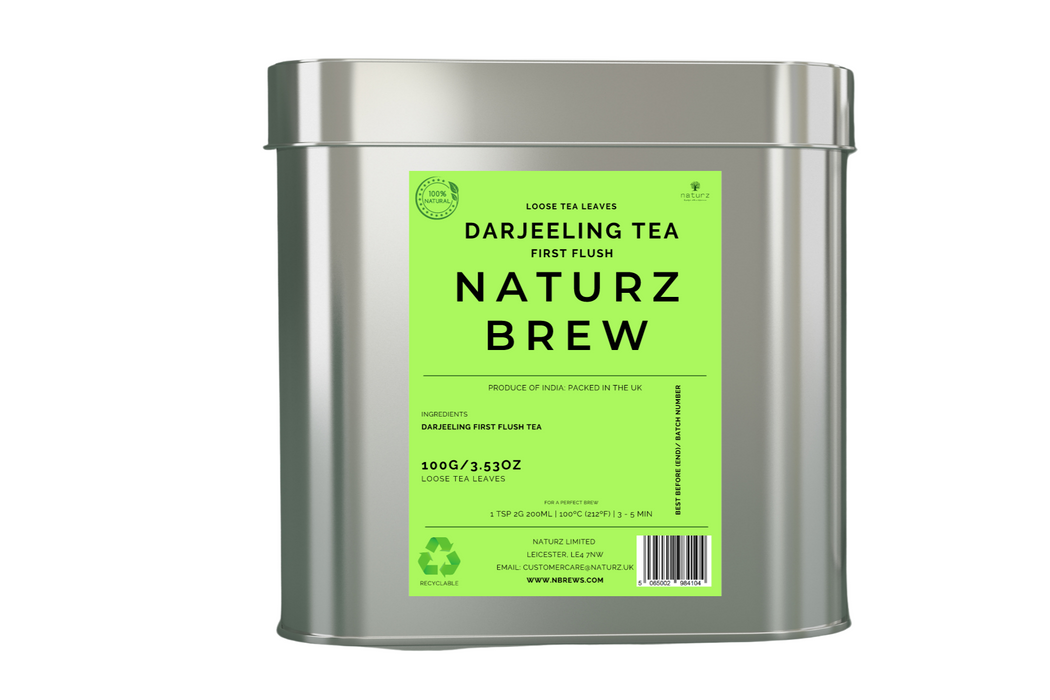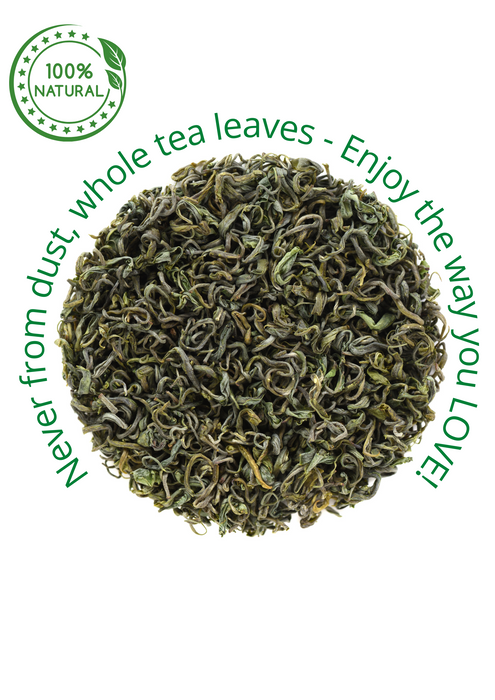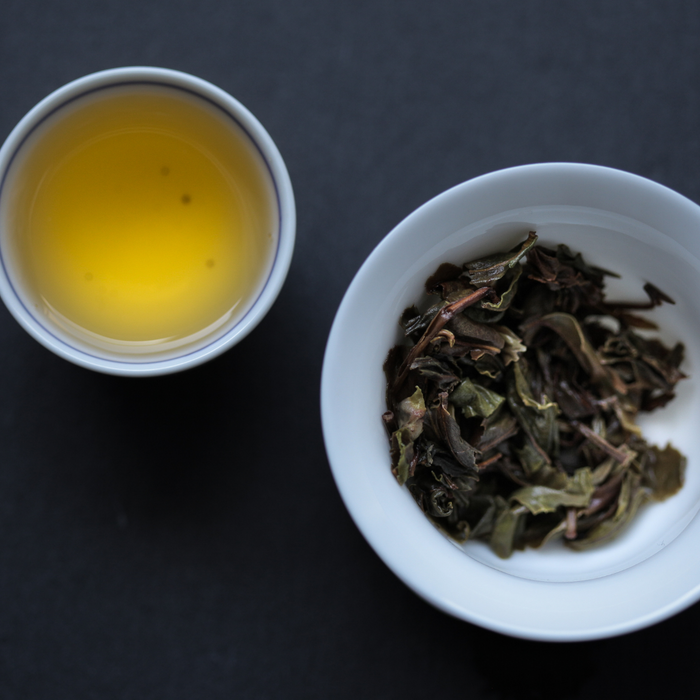
Naturz Brew Darjeeling First Flush Black Tea
Darjeeling First Flush Black Tea
(late February to mid April or early March thru mid April)
This is the first growth after dormancy. The plucking/harvesting time varies by location, some being between late February to mid April, others not starting until early March and going thru mid April. Some call this the “Spring Flush” or “Easter Flush.” If the weather is right, this could be the best flush of the growing season and command high prices from tea connoisseurs.
Often the leaves are plucked while they are still tender new shoots on the stalks of the tea bushes. They are called “buds” but are not like flower buds. They are instead the much sought “two leaves and a bud combo” used in “tippy” teas. They are supposed to contain the most catechins (antioxidants), L-theanine (a stimulant), and caffeine of any of the pickings, but there is some on-going discussion about this, especially the caffeine part. Their shelf-life is usually rather short (a few months at most).
The steeped liquid is described in various ways: very delicate tasting, light infusion with a pale colour ; a generally intense muscatel with ‘point’; a light yellow to coppery red cup colour with delicate flowery aroma; a delicate, floral, pale infusion, usually made into black tea, but sometimes white; a tea that is peachy and greenish; a greener muscatel flavour of tea; outstanding flowery meadow-like flavour, and so on.
Darjeeling is the “Land of the Thunderbolt” and sits at the feet of the Himalayas. The storms that roll across the region play an integral part in the growing cycle of the tea plant, which is an evergreen and tropical, needing lots of rain to grow. Just after the first flush, storms come through and the plants, having soaked up all that moisture, go dormant briefly, and then comes the next period of growth (the second flush). [Note: Not all areas of Darjeeling produce subsequent harvestable growths.]


